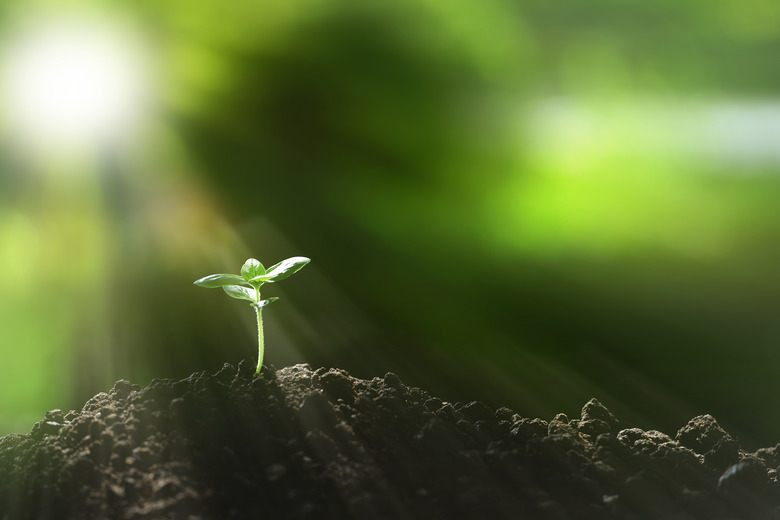What Are The Reactants & Products In The Equation For Photosynthesis?
Photosynthesis is the process by which plants, and some bacteria, use solar energy to produce sugar. This process converts light energy to chemical energy, which is stored in the sugars. This process is important for two reasons. First, photosynthesis provides the energy that is used by all other organisms to survive. Second, photosynthesis removes carbon dioxide from the atmosphere, replacing it with life-sustaining oxygen. The process involves three basic reactants and produces three key products.
TL;DR (Too Long; Didn't Read)
The reactants for photosynthesis are light energy, water, carbon dioxide and chlorophyll, while the products are glucose (sugar), oxygen and water.
Photosynthesis Reactants
Photosynthesis Reactants
The photosynthetic process requires several simple reactants. Water is the first required reactant. The plant acquires water through its root system. The next required reactant is carbon dioxide. The plant absorbs this gas through its leaves. The final required reactant is light energy. The plant absorbs this energy through green pigments, called chlorophyll. This chlorophyll is located in the plant's chloroplasts.
Products of Photosynthesis
Products of Photosynthesis
The photosynthetic process produces several products. The first product, and primary reason for the process, is simple sugar. This sugar, called glucose, is the end result of the conversion of solar energy to chemical energy. It represents stored energy that can be used by the plant, or consumed by other organisms. Oxygen is also a product of photosynthesis. This oxygen is released into the atmosphere through the plant's leaves. Water is also a product of photosynthesis. This water is produced from the oxygen atoms in the carbon dioxide molecules. The oxygen molecules released into the atmosphere come exclusively from the original water molecules, not from the carbon dioxide molecules.
Light-Dependent Process
Light-Dependent Process
Photosynthesis is a two-stage process. The first stage is called the light-dependent process, or light reactions, because it requires sunlight. During this stage, light energy is converted into adenosine triphosphate (ATP) and NADPH. The ATP represents stored chemical energy. These products of the light reaction are then used by the plant during the second stage of the photosynthesis process.
Light-Independent Process
Light-Independent Process
The second stage of the photosynthesis process is the light-independent process, or dark reactions. During this stage, the ATP and NADPH are used to break chemical bonds and form new ones. The bonds of the carbon dioxide molecules are broken; this allows the carbon atoms to be bonded to some of the water molecules to form glucose. The oxygen atoms from the carbon dioxide are bonded to free hydrogen atoms; this bonding produces water. The free oxygen atoms from the original water molecules are released to the atmosphere.
The Overall Process
The Overall Process
When viewed as a whole, the photosynthetic process utilizes 12 water molecules, six carbon dioxide molecules and light energy to produce one glucose molecule, six water molecules and six oxygen molecules. This can be represented by the following chemical equation:
It is important to remember that the resulting oxygen is produced from the original water molecules, not the carbon dioxide. This distinction becomes important when considering anoxygenic photosynthesis.
Cite This Article
MLA
Bennett, Doug. "What Are The Reactants & Products In The Equation For Photosynthesis?" sciencing.com, https://www.sciencing.com/reactants-products-equation-photosynthesis-8460990/. 7 December 2020.
APA
Bennett, Doug. (2020, December 7). What Are The Reactants & Products In The Equation For Photosynthesis?. sciencing.com. Retrieved from https://www.sciencing.com/reactants-products-equation-photosynthesis-8460990/
Chicago
Bennett, Doug. What Are The Reactants & Products In The Equation For Photosynthesis? last modified March 24, 2022. https://www.sciencing.com/reactants-products-equation-photosynthesis-8460990/
